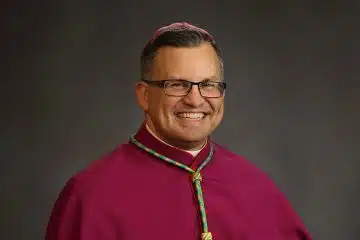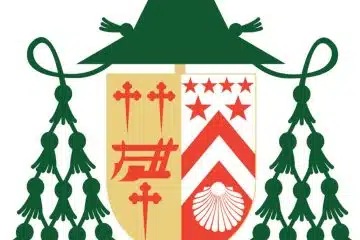ORIGINAL UNITY PART 2: THE SEXUAL DIFFERENCE
ORIGINAL UNITY PART 2: THE SEXUAL DIFFERENCE
POPE ST. JOHN PAUL II’S THEOLOGY OF THE BODY
This article is part of an ongoing series on Pope St. John Paul II’s “Theology of the Body” (TOB).
Last month, we began to explore the second of the “original experiences” described by Pope St. John Paul II: original unity. We saw how God created woman to be a “help” to man. In their first encounter, the man rejoiced, “This at last is bone of my bone and flesh of my flesh” (Gen. 2:23a). Recognizing that she is another embodied person like him, the creation of woman helps man complete the search for identity begun in original solitude. Indeed, Pope St. John Paul II taught that man and woman mutually provide this “help” to each other. Through their encounter, man and woman discover their equal dignity as human persons, as well as the mysterious difference brought to light by their maleness and femaleness. They help one another discover their identity and vocation.
Original unity describes this encounter between man and woman and the discovery of how we are united at the level of human nature. Each of our bodies reveals a person, and we are, therefore, equal in our human dignity. At the same time, our male and female bodies show that we are distinct. It is important to clarify that male and female are not two halves of human nature. Rather, there is one human nature and both man and woman fully participate in it. Essentially, through our bodies, we discover that within this one human nature, there are two ways of being human: male and female. These two – male and female – constitute two ways of having and expressing human nature. Thus, through our male and female bodies, we discover the principle of unity-in-distinction: the one human nature is embodied through the duality of male and female.
In the face of much confusion today, Pope St. John Paul II’s teachings on our maleness and femaleness are more important than ever. He showed in his Theology of the Body how deeply our being male or female affects the person. For instance, he wrote that our maleness or femaleness is “constitutive for the person” and not merely “an attribute of the person” (TOB 10.1). While we discover our maleness or femaleness in the body, the sexual difference affects the entire person, all the way to the core of our inmost being. The body reveals the person, and so the sexuality revealed by the body (i.e., male or female)
reveals something fundamental about who we are. It is the human person as such that is male or female, and this difference of sexuality affects the person on every level.
This teaching on the personal significance of our maleness and femaleness has been emphasized by the Church’s teaching authority on many occasions. For instance, in a letter to the bishops of the world in 2004, the Vatican’s Congregation for the Doctrine of the Faith wrote:
“The importance and the meaning of the sexual difference, as a reality deeply inscribed in man and woman, needs to be noted. Sexuality characterizes man and woman not only on the physical level, but also on the psychological and spiritual, making its mark on each of their expressions. It cannot be reduced to a pure and insignificant biological fact, but rather is a fundamental component of personality, one of its modes of being, of manifestation, of communicating with others, of feeling, of expressing and of living human love” (no. 8).
Similarly, the Catechism of the Catholic Church affirms: “Sexuality [i.e., being male or female] affects all aspects of the human person in the unity of his body and soul. It especially concerns affectivity, the capacity to love and to procreate, and in a more general way the aptitude for forming bonds of communion with others” (CCC, 2332).
We have seen that through the encounter between man and woman, we simultaneously discover our oneness in human nature and the deep, mysterious difference of our sexuality. Reflecting on this unity-in-distinction with the help of Pope St. John Paul II enables us to see how decisive our maleness and femaleness are for our identity and our vocation. We will continue to delve deeper into these realities in subsequent reflections, especially the implications of original unity for our vocation, namely the call to communion.
 Dr. Andrew Sodergren MTS, PSY.D. is a Catholic psychologist and director of psychological services for Ruah Woods. He speaks on topics related to the integration of psychology and the Catholic faith. He and his wife, Ellie, have been married 21 years and have five children.
Dr. Andrew Sodergren MTS, PSY.D. is a Catholic psychologist and director of psychological services for Ruah Woods. He speaks on topics related to the integration of psychology and the Catholic faith. He and his wife, Ellie, have been married 21 years and have five children.
This article appeared in the December 2021 edition of The Catholic Telegraph Magazine. For your complimentary subscription, click here.













